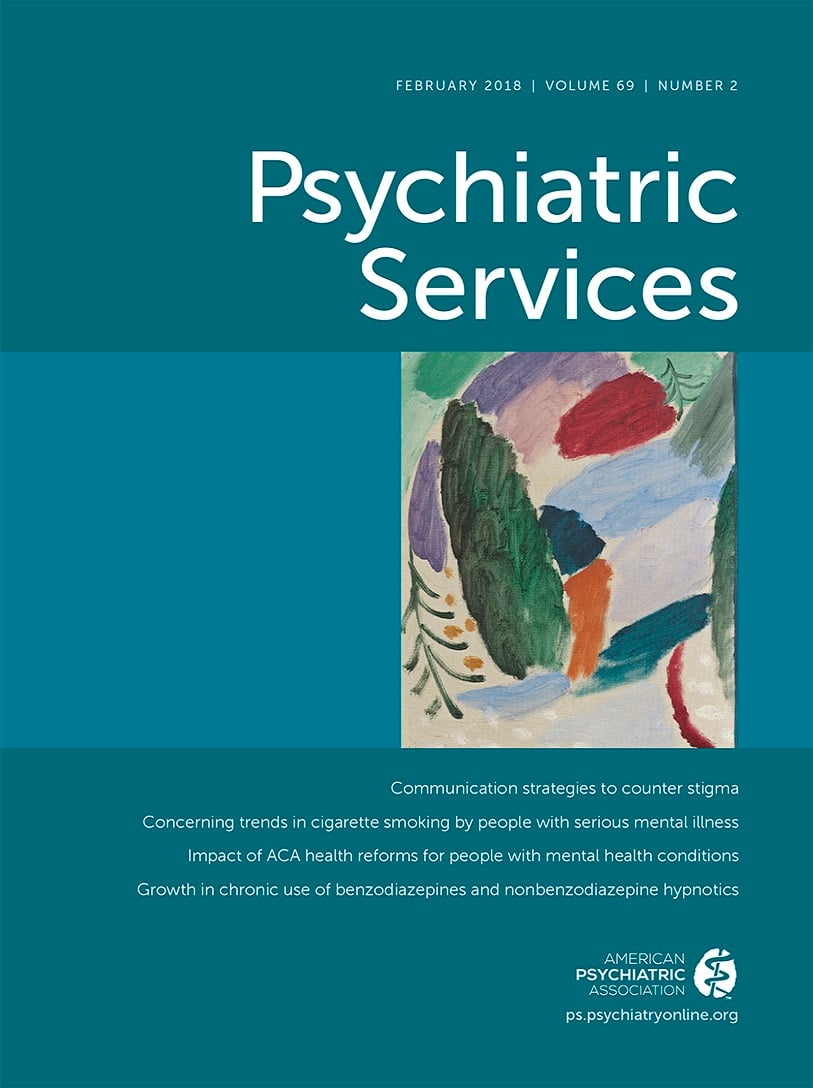In public human services, it is easier to start programs than to evaluate them. Programs are often started by legislators and administrators who know little about what previous initiatives had achieved. Evaluation science, an invention of the 20th century, has a prominent and evolving role in health care of individuals (
1,
2), but its application to public human services, even before the current change in federal policy (
3), has lagged.
What accounts for the omission of such a crucial component of public service? Such evaluation is difficult; recall the decades-long controversy over the benefits of Head Start. The Community Mental Health Center Act of 1963 specifies evaluation as an essential service, but most programs do not follow through. With regard to health services in general, the Center for Medicare and Medicaid Innovation (CMMI), part of the Centers for Medicare and Medicaid Services (CMS;
https://innovation.cms.gov), has a charge to do robust evaluation of all payment and service delivery models. In particular, evidence about health outcomes
, as opposed to participation in the health care system, has started to emerge
, on several CMMI models, including Medicare Pioneer Accountable Care Organizations (
4).
With regard to another significant change in public health care, the privatization of Medicaid, more is known about access and cost than about health outcomes. This gap may begin to be filled as CMS supports measurement science and data collection strategies and as states test their own payment and service delivery models under Medicaid, moving from fee-for-service reimbursement to accountable care or bundled payment arrangements (
5).
In public mental health services, process often gets more attention than outcomes. For instance, a Canadian group applied a Cochrane analysis to the development of practice guidelines in child and youth mental health. They found that most guidelines used to guide care do not meet internationally established criteria for guideline development (
6). But the role of practice guidelines in measuring outcomes played only a small part in their review. In another review, the U.S.-based advocacy organization Building Bridges (
www.buildingbridges4youth.org), which looked at residential treatment, generated “Recommendations for Outcome and Performance Measures” (
7). The organization found no consensus in measuring outcomes; the search for outcomes easily got lost, the investigators found, amid many “performance indicators” at payer and provider levels.
Politics plays a role. Voters want to see something get done. The politician who raises questions about effectiveness may lose popular support. Elected officials want to show results to voters while still in office, not afterward, and they do not want to see unfavorable data emerge.
Such political realities are unavoidable. Translating public concern into political will and legislation is not easy. But the relevant barriers can easily take the form of “reasons not to.” These reasons may or may not be stated explicitly.
Some reasons not to evaluate programs can be given names: “HIPAA,” “IRB,” “not my job,” “it’s already evidence based,” “we know what’s right,” “we don’t know enough,” “we don’t have baseline data,” and “there’s too much to do.” Naming and describing the reasons for not evaluating programs allow us to recognize them, identify the core values on which they are felt to be based, and identify a response that can promote evaluation. [The eight “reasons not to” are summarized in a table available as an online supplement to this Open Forum.]
Deconstructing “Reasons Not to”
In “HIPAA,” the value of patient privacy is invoked, with citations to the 1996 federal Health Insurance Portability and Accountability Act (HIPAA). But there are HIPAA-compliant ways to evaluate outcomes: obtaining permission from individual patients or proxies, using anonymized data, and conducting evaluation as part of quality improvement.
In “IRB,” the need for approval by an institutional review board (IRB), which protects the rights of human research subjects (again under federal law), is cited. But studies for quality improvement are exempt from IRB review. When uncertain, investigators can request exemption from an IRB.
“Not my job” cites fidelity to mission, defined in terms of a specified goal, as in “We were hired to provide a service, not to evaluate it. That would require another contract and more money.” Although systematic evaluation requires substantial resources, evaluation can begin on a smaller scale with available resources. To begin on this level, the necessary ingredients are motivation and commitment, not money.
“It’s already evidence based” cites a popular value, the use of evidence-based treatment. As the program being considered uses interventions previously tested with individuals, usually in randomized clinical trials, the results of those individual trials are seen to make program evaluation unnecessary. But the clinical trials may have been done in research settings with selected populations—applying the results to general populations is different (
8). “Practical clinical trials” may meet this need (
9). Translational research aims to take findings from laboratory into practice, with evaluation occurring in clinical settings (
http://ncats.nih.gov/clinical). Most of what gets cited as evidence based was not done in such settings.
“We know what’s right” invokes a popular ideology as justification to keep doing something consistent with that ideology, even if data supporting its effectiveness are lacking. For instance, the idea that community-based care is always good, and hospital-based care always bad, has been seen to justify continued closing of psychiatric hospital beds, in the absence of supportive data, or even in the presence of evidence of adverse effects (
10).
“We don’t know enough” is often invoked with regard to mental health services, particularly services for children. The challenges of tracking longer-term, not just short-term outcomes, are cited, as are the challenges of facilitating and measuring change among parents as well as children and of coordinating and evaluating interventions in the separate silos of health, mental health, education, and social services. Relevant, too, are the challenges of using first-person reports from children and parents, along with “objective” data from professionals, and of accounting for cultural differences of expectation and assessment. Substantial as these challenges are, however, they have been addressed (
11,
12), even in the global context (
13).
“We don’t know the baseline” cites lack of data from the years preceding the new program. Obviously, preprogram data would help. But there may be data from a previous era from some of the population under review. It may also be possible to implement the new program in one population, letting another untreated population (“treatment as usual”) serve for comparison. A commitment to evaluating outcomes can take the form of starting with a part of the whole population or of evaluating the population for a limited time, with the goal of measuring at least some results.
“There’s too much to do” cites the myriad parts of any public project, from concept to design to legislative approval and funding to implementation. Getting the program going, especially as policy or resources change, can be felt to be the first priority, precluding evaluation. The response is to acknowledge the urgent operational needs, to foster an ethic of evaluation among the parties, and to work incrementally, starting with some part of the project that is feasible to evaluate.
Those invoking reasons not to care about public service and cite important values. But leaving these reasons unchallenged robs us of something equally valuable, namely knowledge of the effectiveness of what we do. We need such knowledge in order to appreciate interventions that work and to learn what is not working so that we can better serve people who depend on public service. Formative evaluation may even improve the intervention while it is being implemented.
Future Directions
The need in the United States to base innovation on outcomes data, not on good intentions, principles, or ideology, has grown stronger as the coalition of stakeholders committed to expanding services and access to care has had to reckon with a new White House administration less clearly committed to public action on behalf of those in need (
3,
14).

